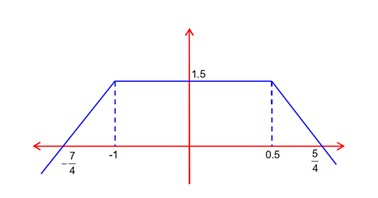Class 11th
Get insights from 8k questions on Class 11th, answered by students, alumni, and experts. You may also ask and answer any question you like about Class 11th
Follow Ask QuestionQuestions
Discussions
Active Users
Followers
New answer posted
4 months agoContributor-Level 10
2O3(g) -> 3O2
t = 0 a moles 0
-0.5a mole +0.75a mole
At Eq. 0.5a mole 0.75a mole
Total moles at eq = 0.5a + 0.75 a = 1.25a
New answer posted
4 months agoContributor-Level 10
Phosphorous can expand its covalency beyond 4, as it has vacant 3d orbitals. Nitrogen can't expand its covelency beyond 4, as it does not posses vacant 3d- orbitals.
New answer posted
4 months agoContributor-Level 10
Fire extinguisher contains sodium Bicarbonate (NaHCO3), also known as baking soda.
New answer posted
4 months agoContributor-Level 10
NaOH is obtained by electrolysis of NaCl. Solution of NaCl using Hg cathode
New answer posted
4 months agoContributor-Level 10
Bond order of
Bond order of
Bond order of
NB = No. of electrons in bonding molecular orbitals.
NA = No. of electron is Anti bonding molecular orbitals
New answer posted
4 months agoContributor-Level 10
Enamel has calcium hydroxyl apatite [Ca10 (PO4)6 (OH)2], CaCO3, CaF2 and Mg3 (PO4)2
Ca2+, P5+ and F- are present
Taking an Exam? Selecting a College?
Get authentic answers from experts, students and alumni that you won't find anywhere else
Sign Up on ShikshaOn Shiksha, get access to
- 65k Colleges
- 1.2k Exams
- 679k Reviews
- 1800k Answers

